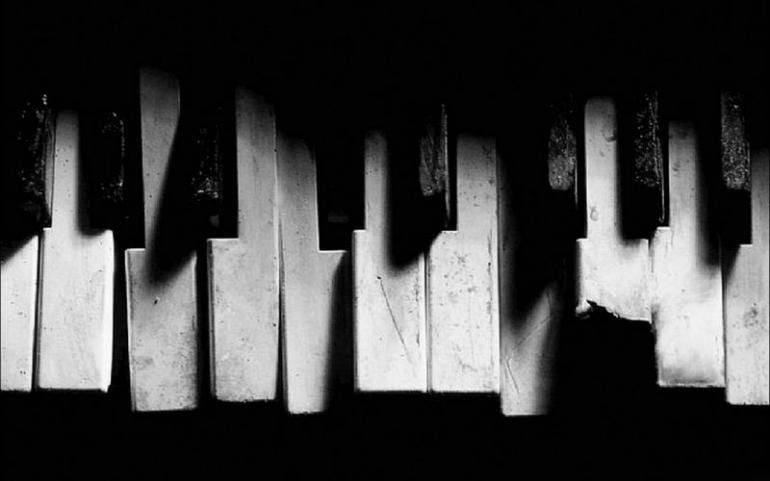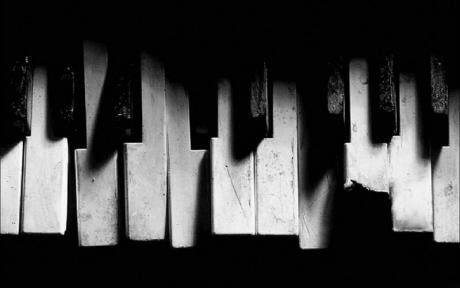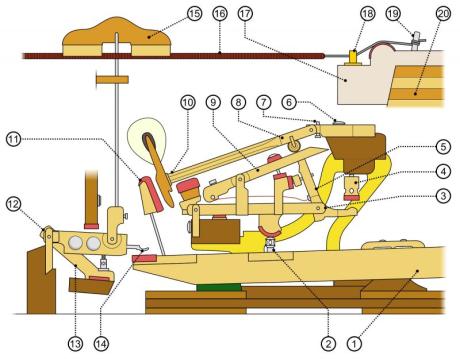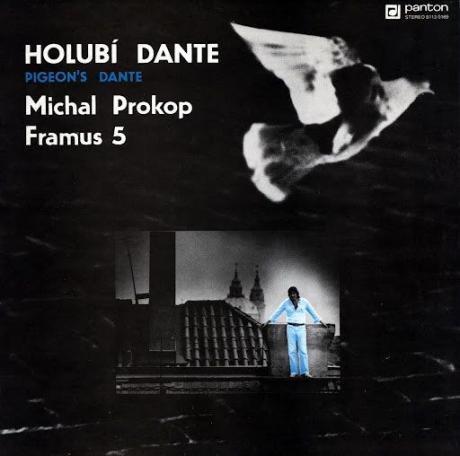Rockové klávesy - Differences and Similarities in Playing Keyboards versus Real Piano

Differences and Similarities in Playing Keyboards versus Real Piano
This month I wanted to speak about the differences between the action of the acoustic piano vs the lighter plastic keys of an organ or synth. The invention of the modern piano is credited to Bartolomeo Cristofori (1655-1731) of Padua, Italy. Remarkably, three of Cristofori’s pianos from the 1720s survive today. As the new instrument developed it was called different names; pianoforte, fortepiano, and finally piano. The piano had a very different style of key and mechanism from early clavier instruments. In my research, I discovered Johann Sebastian Bach tried one of the early pianos in 1730s, but wasn’t impressed saying that the higher notes were too soft. Bach did approve of a later instrument he saw in 1747, however. As you can see, even in the 1700s keyboardists would play instruments of very different action. Before the piano, most keyboards were some sort of harpsichord, clavichord, or organ which had a much lighter key weight than the piano. Here is a diagram of the action of a piano:

The big advancement of the piano was that it has a very large dynamic range. With subtle changes in finger attack, a great contrast of dynamics could be achieved. The heavier weight of the key also makes the piano harder to play, physically, than it’s lighter key cousins. For many pianists, especially classically trained, it’s very common to have tendon or muscular problems associated with the instrument. Playing mostly organ myself, I always know when I play a gig on piano because my hands hurt the next day. I suffered with various tendon problems in my youth and to complicate matters I have a permanently broken pinky on my right hand. I tried every kind of therapy and I can say that Chinese Tui Na (en.wikipedia.org/wiki/Tui_na) and pressure point manipulation totally cured me. Doctor Ting also would always say “Always hot for tendons”. He would advise me to take one really hot shower in the morning and one at night. I also began to understand that many of the physical problems I had with the piano usually had some emotional root. I was either trying too hard or caring too much. These days the only thing going on in my mind when I play is “relax... lower your shoulder... breathe”.
If you suffer from hand or arm pain try to investigate the above link and experiment with pressing your own pressure points for relief. Pay particular attention to the shoulders. This is where most keyboards hold tensionPlastic key keyboards also have their share of problem. Many pianists hate the action of keyboards because there is not as much control over dynamics, the key feels too light and bounces back very quickly. It is in general easier to play quickly and without injury on plastic keys. Strangely, the same rules apply to the technical approach. If you are very relaxed in your approach to the keyboard you will be able to have a much more nuanced touch. Personally I try not to let the action of any keyboard get me down. I try to not even think about it and just deal with whatever piano or keyboard is provided. It’s really important to be comfortable on both so try not to be really particular about what instrument a venue provides because usually you won’t get exactly what you want.Even with keyboards there is great variance of touch and action.
My Hammond SK-1 has a really nice key bed with what they call “waterfall” keys like on a Hammond organ that go straight down instead of curling back under like most keyboards. To make things more complicated, some less expensive controllers have slightly uneven keys. How should we handle this dilemma? In my experience, no matter what instrument you have to play on, your approach to technique should be the SAME! Many years ago, I was a student of master pianist, Kenny Werner, who penned the now famous book, Effortless Mastery (Kenny Werner. Effortless Mastery. Liberating the Master Musician within Book and CD. New Albany: Jamey Aebersold Jazz, Inc.,), which I highly recommend. While doing “the 5 finger exercise” which is the backbone of his teaching, he would ask you questions like “What temperature is the key?”. This unusual question immediately made me experience the feeling of the key in a very different way. On your own, try to start really feeling the keys in a very subtle and sensitive way. It will immediately change your approach and touch. So being that our approach should be the same for every keyboard instrument we play, What should we study to make our technique more fluid? Here are my two favorite technical resources: Hanon Exercises. Charles-Louis Hanon was born in France in the village of Renescure on July 2, 1819. His exercises have become the standard for piano technique.
Both Sergei Rachmaninoff and Josef Lhévinne claimed Hanon exercises (Charles-Louis Hanon. The Virtuoso Pianist (Le Pianiste virtuose). Boulogne, 1873) to be the secret of the Russian piano school. There are people that don't like the exercises claiming that they can cause serious injury and there is a bit of truth to it so be careful when you practice not to hurt yourself. Just take it slow and always try to achieve the techniques with the most efficient and relaxed approach. I started playing piano with the Hanon major and minor scales book and, in my opinion, they really are the key to playing correct fingerings on the piano in all keys. One of the big problems I see in my students is that they don’t have efficient fingerings when they play and are using a lot of unnecessary motion and twisting of the wrist. Hanon has a great web site with free exercises. Here’s one:
www.hanon-online.com/the-virtuoso-pianist/part-i/exercise-n-4
Another invaluable resource for great technique is Bach’s Well Tempered Clavier which is a collection of solo keyboard music organised into preludes and fugues in all 24 major and minor keys. The collection, completed 1722, was composed “for the profit and use of musical youth desirous of learning, and especially for the pastime of those already skilled in this study”. Bach later compiled a second book dated 1742, The two works are now considered to make up a single work, The Well-Tempered Clavier Book I and II (BWV 846-893, 1722). This collection is generally regarded as the most influential solo piano work in the history of Western classical music. Chopin is said to have used these volumes to teach his students. Here’s my favorite fugue from Book 1, Bach’s C# Major Fugue with form and analysis: bach.nau.edu/clavier/nature/fugues/Fugue03.html
Here’s a selection of the sheet music also. The fugue starts after the double bar. Just a side note on the history of this volume; The opposing system of tuning in Bach’s day was meantone temperament in which keys with many accidentals sound out of tune.In most tuning systems used before 1700, one or more intervals on the twelve-note keyboard were so far from any pure interval that they were unusable in harmony and were called a “wolf” This was the first volume of music that really popularized this “new system” where the keys were slightly less in tune but had for the most part equality in the intervals.I want to leave you with one more thought specifically for piano. Many keyboardists get locked in their fingers and forearms when they try to play complicated technical things. Try to experiment keeping the hands and arms loose and bring the weight from your back. My classical piano teacher, Neil Larrabee, would have me lift my arm slowly and rater high and in a slight circle before I would touch the key. This would take the natural weight of your arm to the keys without needing to lock up the forearms. I’m parting, check out this cool link that speaks about efficiency through the lens of Boxing!
Glossary
Action: Zatímco u kytary toto slovo znamená „dohmat“, u klávesových nástrojů se tím myslí reakce klaviatury na stisk - jak tuhý je stisk, jak dlouhý (hluboký) je chod nebo jak se klávesy vracejí po stisknutí.
Tendon problems: Problémy se šlachami, zpravidla záněty. Mnozí z nás je znají až příliš důvěrně. Tvrdí se, že na vině je špatná technika. Můžeme si prý za to sami!
Permanently broken pinky: Zlomenina malíčku s trvalými následky.
Bounce back: Způsob, jakým se klávesa po stisknutí vrací do původní polohy.
To have a nuanced touch: Být schopen hrát citlivěji, jemněji, s větší dynamikou.
Key bed: Podloží klaviatury, zkrátka povrch, na který klávesa dopadne, je-li plně stlačena.
Waterfall keys: Klaviatura, jejíž přední strana je zcela vertikální a má zaoblenou hranu. Nejčastěji se tento typ objevuje u varhan Hammond nebo u jejich simulací (např. Nord Electro). Hlavní výhodou je možnost hrát skluzy dlaní na přední hraně kláves. Zkuste takto glissanda hrát na klasické klavírní klaviatuře a možná skončíte na pohotovosti...
The backbone of his teaching: „Backbone“ doslova znamená páteř. V tomto spojení se jedná o hlavní myšlenku, základ určitého učení.
Fluid technique: Technika, díky které je naše hra uvolněná a plynulá, není křečovitá.
Desirous of learning: Bažící po nových poznatcích či dovednostech.
Pastime: Kratochvíle či aktivita, kterou člověk dělá, má-li času nazbyt.
Volumes: Pozor na to, abyste v tomto případě nechápali „volume“ jako „hlasitost“. Dalším významem je totiž „knižní svazek“ a právě tak je potřeba výrazu rozumět v kontextu tohoto článku.
Through the lens of boxing: Viděno prismatem boxování neboli skrze jeho optiku. Autor zkrátka přirovnává techniku hry k boxování a na této paralele staví své učení.




